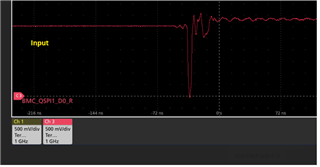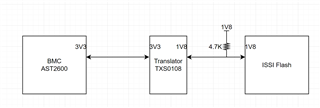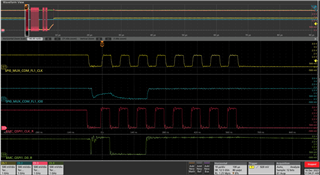Other Parts Discussed in Thread: TXB0302, TXB0304, TXB0106, TXB0108, , LSF0108
Hi TI team,
We need to translate between 1V8<->3V3 for QSPI application. But we have the issue is that when input has a short pulse, the output can not go high back.
It look oneshot circuit can not work normally with short pulse like this. So when input go high back but output go high by pull up resistor not by oneshot
Is it correct?
If yes, Any constraint for input to avoid this issue?


Note: Above 2 pictures are not in the same scale
Thanks,






